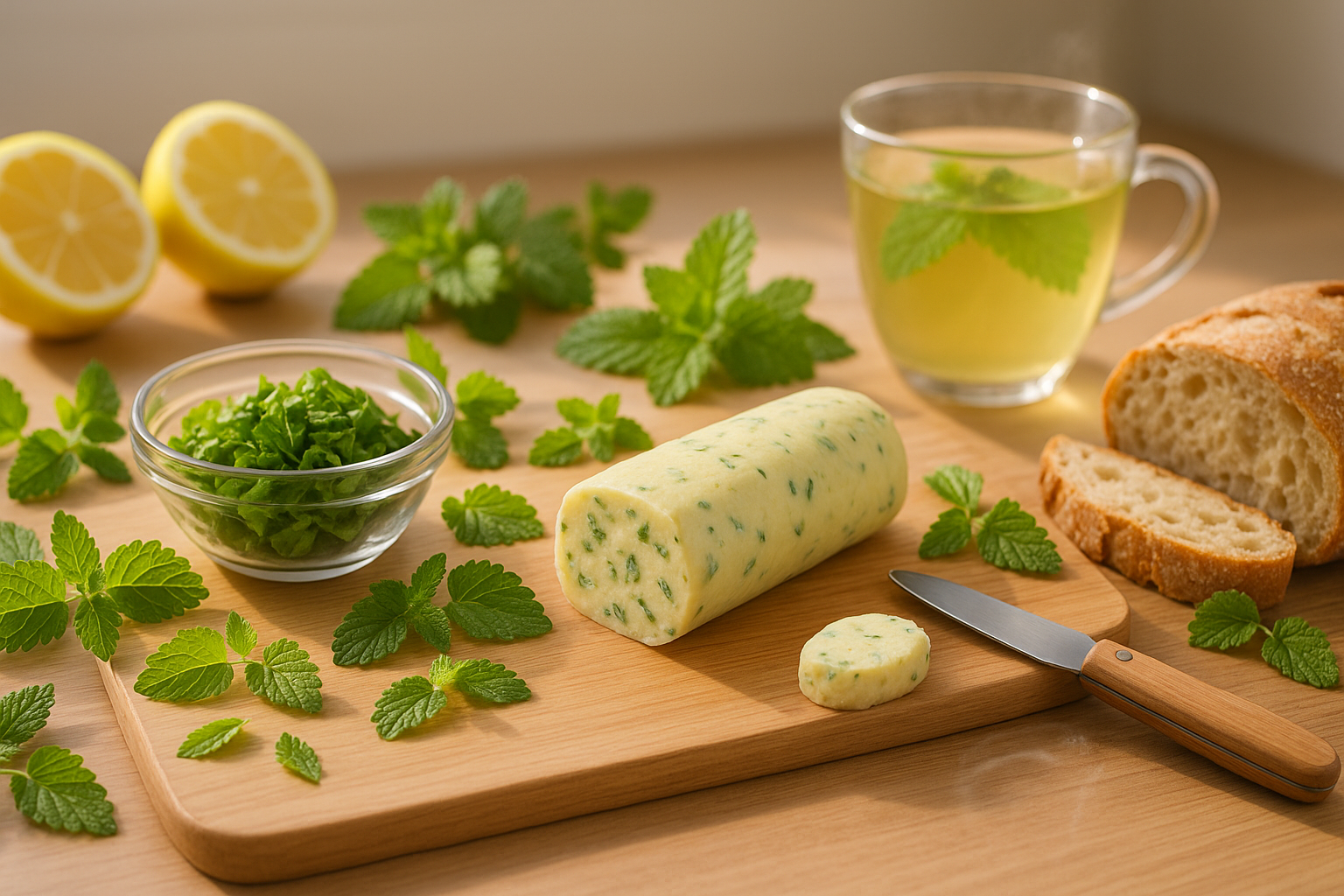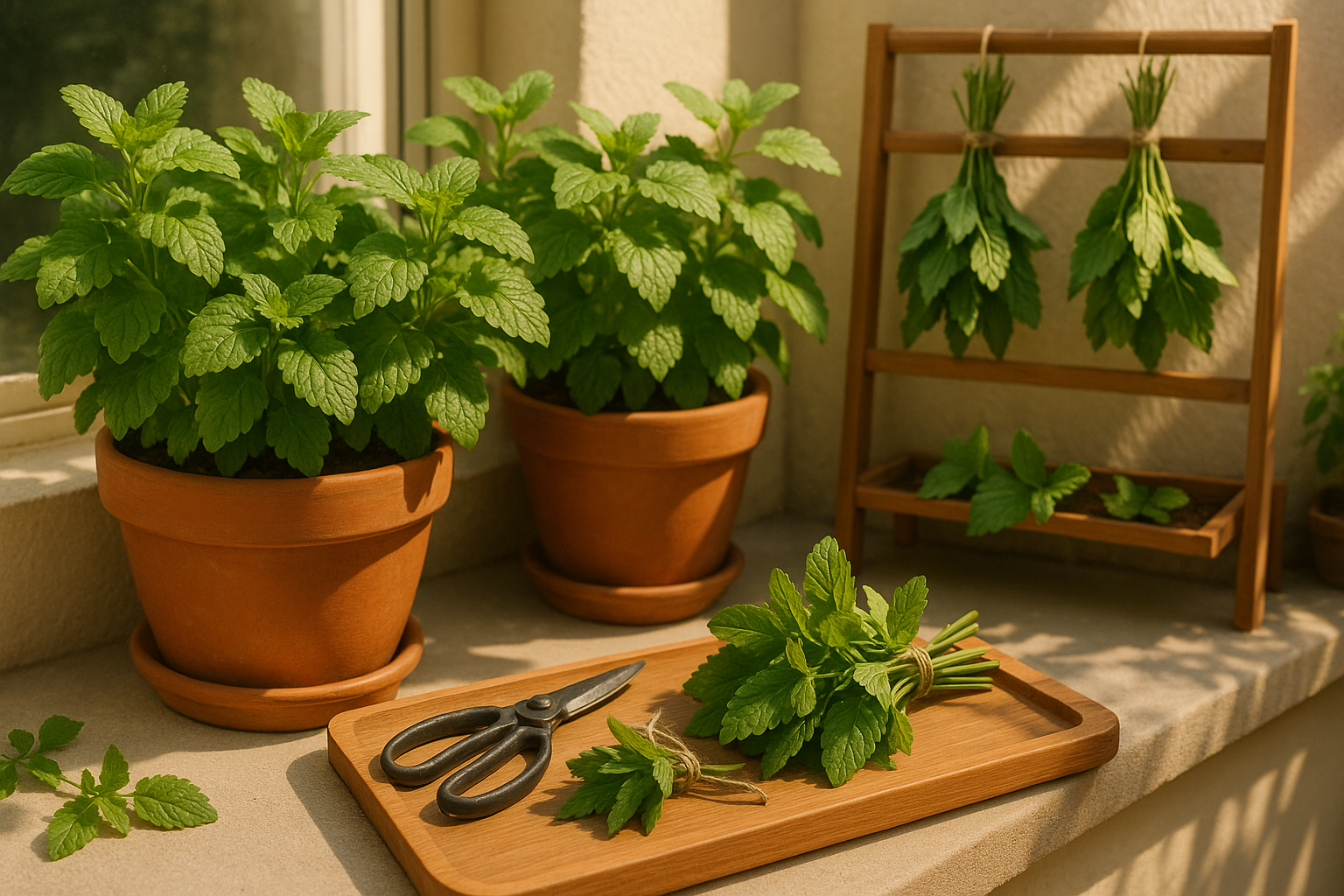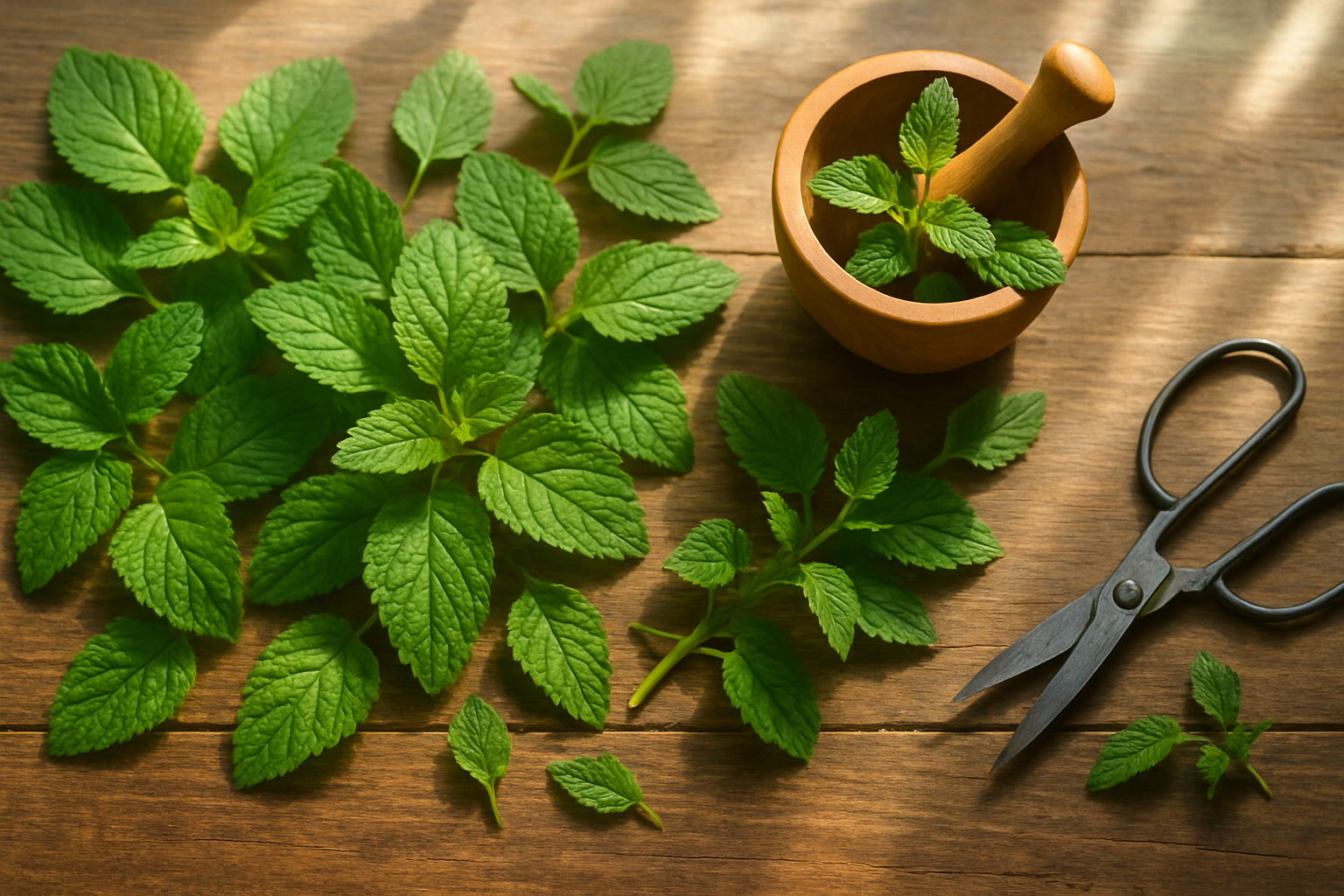Introduction to Lemon Balm
Cooking with lemon balm can completely transform the way you approach fresh flavors in your kitchen. Lemon balm, also known as Melissa officinalis, is a bright green herb in the mint family, easily recognized by its soft, crinkled leaves and delicate citrus aroma.
Historically, lemon balm has deep roots—ancient Greeks revered it for both its medicinal qualities and its uplifting scent, while medieval cooks and healers valued it for soothing teas and healthful syrups. Today, this versatile herb is making a comeback as a secret ingredient in modern kitchens, celebrated for its ability to add a gentle lemony note without the sharpness of citrus juice.
Home cooks and professional chefs alike appreciate how a handful of fresh lemon balm leaves can brighten up salads, desserts, sauces, and even cocktails. What’s more, cooking with lemon balm brings benefits beyond flavor: it’s naturally rich in antioxidants and known for its calming effects, lending a subtle wellness boost to your meals.
Whether you grow it on your windowsill or find it at a farmer’s market, this herb is ready to inspire a whole new set of flavor pairings and creative uses that will make your dishes pop.
What Does Lemon Balm Taste Like?
Lemon balm offers a refreshingly mild, citrusy flavor that’s often described as a gentle cross between lemon and mint. Its aroma is bright and uplifting, with subtle notes of lemon zest and a hint of sweetness that isn’t as sharp as lemons themselves.
Think of it as the soothing cousin of lemon, with just enough minty undertones to create a cooling effect that doesn’t overpower your palate. Many people liken its taste to a softer blend of lemon verbena and fresh peppermint, making it incredibly versatile in the kitchen.
Lemon balm is an excellent addition to:
- Teas
- Fruit salads
- Garnishes for desserts where you want a hint of lemon without the acidity
It pairs well with fish, chicken, and light pasta dishes, offering freshness without dominating other flavors. If you’re out of fresh lemon, you can swap in lemon balm leaves to bring a gentle citrus note to vinaigrettes or homemade pestos.
Likewise, if a recipe calls for fresh mint or basil in a cold drink or herbal syrup, lemon balm makes a unique and aromatic substitute. Its mellow flavor profile helps balance sweet and savory dishes alike, making it a handy herb to keep in your kitchen arsenal.
Health Benefits of Lemon Balm
Lemon balm, a fragrant herb from the mint family, is well-known for its soothing qualities and delightful flavor. Traditionally, herbalists have used lemon balm to calm nerves, ease anxiety, and promote restful sleep. Steeping its leaves in a relaxing tea remains a popular home remedy for stress relief.
Modern research supports some of these benefits, suggesting that compounds in lemon balm may help reduce symptoms of anxiety and improve mood. It’s also valued for supporting healthy digestion, with studies and anecdotal evidence indicating it may ease mild stomach discomfort and bloating.
In the kitchen, lemon balm’s fresh, citrusy flavor makes it a versatile culinary herb. It adds a refreshing note to salads, desserts, and iced teas, though these culinary uses usually involve much smaller amounts than medicinal preparations.
When considering lemon balm supplements, safety is key. Most people tolerate it well, but allergic reactions are possible—especially for those sensitive to other mint-family plants. People with thyroid issues, those taking sedative medications, or pregnant and breastfeeding women should consult a healthcare provider before use, as lemon balm may not be appropriate in these cases.
Using lemon balm in moderation and seeking professional advice helps ensure you enjoy its benefits without risk.
How to Use Lemon Balm in Cooking

Lemon balm is a vibrant, citrus-scented herb that can instantly elevate both sweet and savory dishes. One of the easiest ways to use fresh lemon balm is to chop the leaves and blend them with softened butter to create a fragrant herb butter—perfect on fish, vegetables, or crusty bread.
You can also steep a handful of whole leaves in hot water to make a calming herbal tea, or chop and toss them into fruit salads and green salads for a refreshing twist. For baked goods, try folding finely chopped lemon balm into cake batter, muffin mix, or scone dough; its gentle lemon flavor pairs wonderfully with berries and honey.
Lemon balm also brightens up sauces, pestos, and vinaigrettes. Start with a tablespoon of chopped leaves and adjust to taste.
To prepare lemon balm, rinse the leaves gently and pat them dry. Strip the leaves from the stems, as stems can be tough and bitter. Store fresh lemon balm in the refrigerator, wrapped in a damp paper towel inside a plastic bag, for up to a week. For longer-term use, freeze chopped leaves in ice cube trays with a little water.
If you’re measuring, keep in mind that fresh lemon balm is milder than dried, so use three times as much fresh as you would dried. When cooking with heat, add fresh lemon balm near the end to preserve its delicate flavor and aroma. Dried lemon balm can be added earlier since its flavor holds up better.
With these simple tips, you’ll find plenty of tasty ways to let this delightful herb shine in your everyday cooking.
Best Flavor Pairings with Lemon Balm
Lemon balm’s light, citrusy flavor makes it surprisingly versatile in the kitchen, pairing beautifully with a wide variety of foods and drinks.
For savory dishes, try adding chopped lemon balm to roasted chicken or delicate fish like cod—its freshness lifts the flavors without overpowering them. It also shines in creamy sauces, salad dressings, or sprinkled over steamed seasonal vegetables such as asparagus, peas, or new potatoes. Dairy ingredients like yogurt, cream cheese, and butter absorb lemon balm’s subtle lemon notes, making it a great addition to herbed spreads or compound butters for entertaining.
On the sweet side, lemon balm can be stirred into fruit salads—especially with strawberries, blueberries, or peaches—to brighten summer flavors. It pairs well with honey, making it a lovely finishing touch on yogurt bowls, homemade ice creams, and sorbets.
Lemon balm’s affinity for other herbs is remarkable; mix it with mint or basil in iced teas, summer cocktails, or as a garnish for lemonade. For an herbal twist, infuse it in syrups for desserts or cocktails.
When working with seasonal produce, combine lemon balm with spring berries or stone fruits in tarts, add it to cucumber salads in summer, or toss with apples and pears for autumnal crumbles.
Even drinks benefit—a handful of fresh leaves in sparkling water, gin and tonics, or sun tea instantly makes the beverage more refreshing.
Whether you’re planning a savory meal or a sweet treat, lemon balm is a flexible herb that brings out the best in fresh, seasonal ingredients.
Lemon Balm Recipe Inspiration
If you’re looking to add a burst of fresh, citrusy flavor to your dishes, lemon balm is a versatile herb worth exploring. Start your morning with a soothing cup of lemon balm tea—just steep a handful of fresh leaves in hot water, optionally adding honey or mint.
For a zesty twist in the kitchen, chop lemon balm and mix it into marinades for fish or chicken, where it brightens up flavors much like lemon zest or parsley.
Lemon balm is also delicious blended with soft cheese for a creamy spread, or sprinkled over fruit salads for a fragrant finish.
Sweet lovers can infuse lemon balm into simple syrups and drizzle over berries or cake, while adventurous mixologists can muddle it into mojitos or combine it with cucumber in a gin cocktail.
Adapting favorite recipes is easy—swap in lemon balm where you’d typically use basil or mint in pesto, or toss a few leaves into homemade popsicles and lemon bars.
For inspiration, try pairing lemon balm with strawberries and vanilla, or citrus and honey in vinaigrettes.
With a little creativity, this aromatic herb can add a refreshing note to countless drinks, desserts, and even your next main course.
How to Grow, Harvest, and Store Lemon Balm

Growing lemon balm at home is simple and rewarding—this hardy herb thrives in pots or garden beds with well-draining soil and partial sunlight. Start with seeds or small nursery plants, keeping the soil consistently moist but not soggy. If you don’t have the space or time to grow it yourself, check local farmers’ markets in spring and summer for fresh bunches.
Harvesting
To harvest, snip off stems just above a leaf node in the morning when the oils are most concentrated; this encourages bushier growth and preserves the bright, citrusy aroma. Always use sharp scissors and avoid taking more than a third of the plant at once to ensure it keeps producing throughout the season.
Storing
For storing, fresh lemon balm leaves can be wrapped in a slightly damp paper towel and placed in a plastic bag in the fridge for up to a week. To enjoy it year-round, dry the leaves by bundling stems and hanging them upside down in a cool, airy room out of direct sunlight, or use a dehydrator if you have one. Store dried leaves in an airtight container in a dark cupboard, where they’ll retain their flavor for several months—ready to brighten teas or recipes whenever you need a burst of lemony freshness.
Conclusion & Next Steps
Lemon balm brings a fresh, citrusy flavor that can brighten up drinks, salads, sauces, and even desserts, making it a versatile herb worth trying in your kitchen. Its subtle lemon aroma pairs especially well with chicken, fish, or herbal teas.
Don’t be afraid to experiment—toss chopped leaves into fruit salads or blend them into homemade pesto for a twist.
If you’re curious to learn more, plenty of recipe blogs and videos online offer creative ideas for using lemon balm. Take a look at gardening sites or YouTube tutorials to explore how to grow and cook with this delightful herb.
